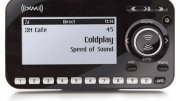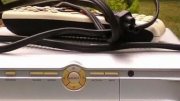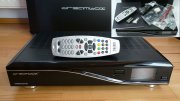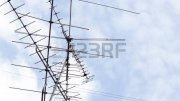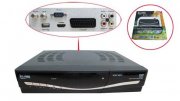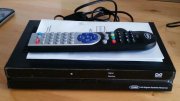 The problem: I've set up everything the way the manuals said, but I'm not seeing any channels. My receiver says that it's getting good signal strength but no signal quality.
The problem: I've set up everything the way the manuals said, but I'm not seeing any channels. My receiver says that it's getting good signal strength but no signal quality.
This is the most common problem in setting up a new system. In almost every case, it boils down to one simple issue: Your dish is not pointed where you think it's pointed.
First, you can generally disregard signal strength when setting up a system. You can get a signal strength reading if you point your dish at a brick wall. What really matters is signal quality.
So why is your dish pointed wrong? You might have relied on the dish's elevation indicator, which is usually at least a little off. You might have forgotten to include magnetic declination when you used your compass find the azimuth. You might have even tried to line up an offset LNB to the direct elevation angle instead of recognizing that the signal will bounce down off the dish to its LNB.
Here's how to fix it:
- Choose a satellite with active transponders.
- Use your receiver to track the signal quality for a good transponder (by manually entering the details, if necessary), OR
Buy a cheap "satellite finder" (search the web using that phrase). - Point the dish at the right azimuth, then raise and lower it slowly until you see a glimmer of signal strength, either through your receiver or the satellite finder. Go slowly left-right, up-down until you've maximized that signal.
- If you used a satellite finder, use your receiver's blind search to see what transponders are active. Check LyngSat to see which satellite matches those transponders. If that satellite isn't the one you planned on, go back to DishPointer and see what the elevation and azimuth numbers are supposed to be for the satellite that you found. Then you'll know exactly where your dish is pointing!
- (If necessary) Add or subtract the exact difference between where you want to point and where you're currently pointing, and you'll quickly know how to point your dish to get what you want.
The problem: A channel that I've been watching for weeks is suddenly gone.
The first test is a sanity check; can you still see other channels on that same satellite? If not, the problem may be a cable break or a moved dish.
If the equipment's okay, try a new blind search on the same satellite. Sometimes channels will hop between transponders or just acquire a fresh set of PIDs. If you're lucky, you'll find it in a new place.
Otherwise, it's time to go online. Check discussion forums and channel lists to see whether anyone's mentioned any changes to that channel. Sometimes the information will only verify that it's gone. Once in a while, the channel will turn up on a different satellite. Good luck!
The problem: On some channels, I can't hear anything on my TV.
The most common reason for this problem is that some channels use AC-3, also known as Dolby Digital. With the right audio processor, AC-3 can provide 5.1 channel surround sound, but if you have a receiver limited to DVB stereo sound, it won't know how to handle AC-3.
Some FTA receivers (especially those that handle HD channels) have built-in AC-3 decoders. Other receivers can pass out the raw AC-3 signal, often through a S/PDIF port, to be used as an input in a general-purpose AV receiver.
Some channels provide multiple versions of their audio. For these, you can select the Audio button on your receiver's remote and select from the provided choices.
Source: www.ftalist.com
Related posts:


